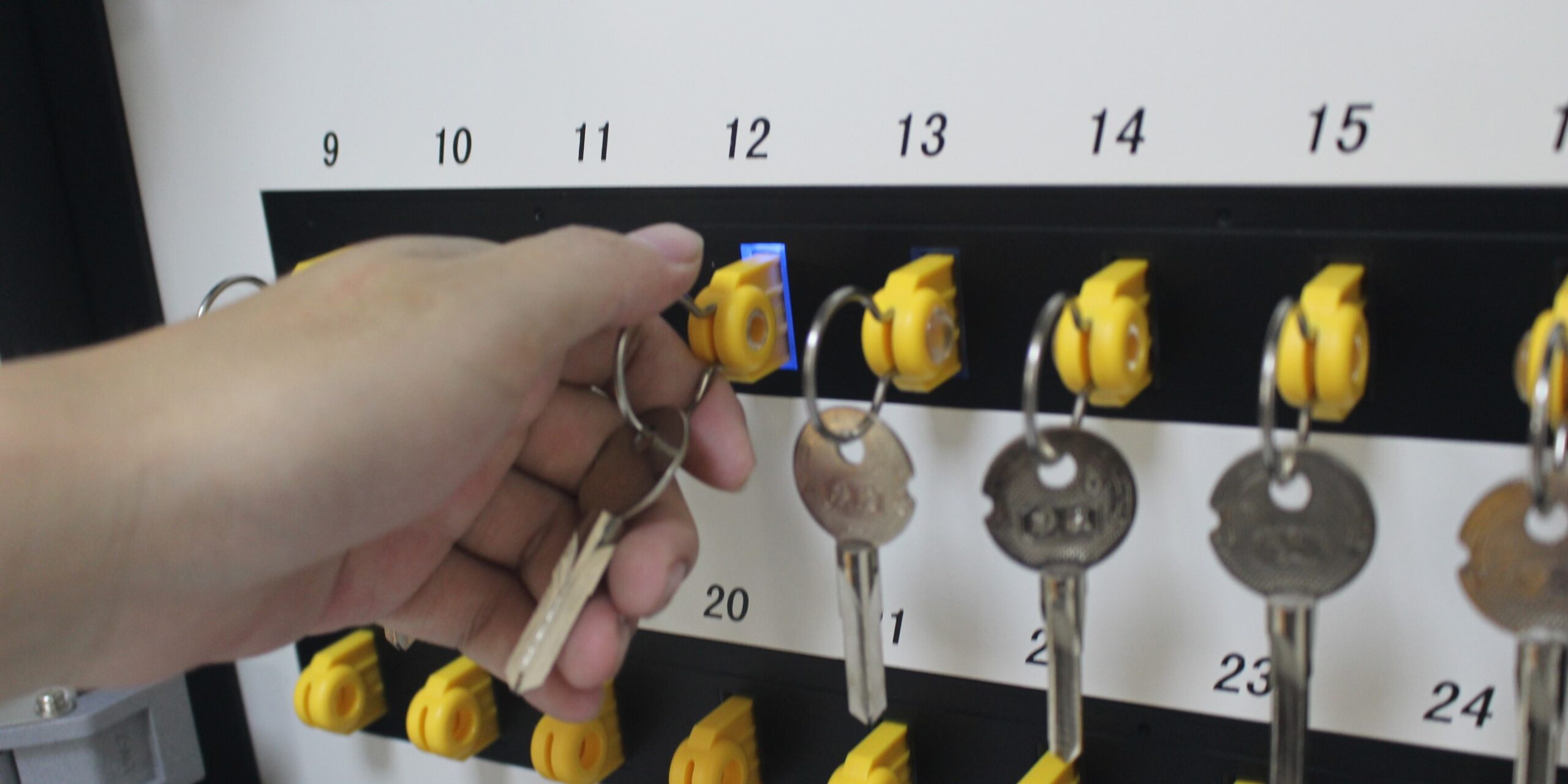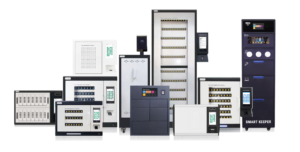More and more business security practices are going digital. Every year, it seems like something you took for granted as a physical process is automated or made electronic. Will physical keys be next?
We don’t think so. On the contrary, there are many reasons to expect physical keys to be a mainstay of corporate security programs for years to come. First and foremost, they’re cost-effective solutions for access control at organizations of any size.
They’re an excellent option for SMBs that need to manage their security budgets closely. Enterprise businesses may have larger budgets, but they also tend to have much larger facilities. As a result, switching to electronic access controls at scale can be incredibly expensive.
So physical keys are here to stay, but they need proper management or they can quickly turn from security assets to liabilities. Key management systems are designed to limit those liabilities and cut other operating costs through automation.
1. What is key management?
Key management is the process of securing, tracking, and distributing physical keys. Why is this important? Since keys grant access to sensitive locations and assets within your organization, when you improve the security of keys, you enhance the security of those valuable resources.
Key management systems also control the costs that come with using physical keys. These systems reduce overhead through automation. They reduce and often eliminate the need for re-keying whole facilities due to key loss or security breaches.
Some smaller companies might be able to employ a pen-and-paper key management protocol. Larger companies, or those that want better insight and control over keys, usually opt to use electronic key management systems.
2. Why use a key management system?
A key management system can be a cornerstone of your key control process. At the most basic level, key management systems do two crucial things pen-and-paper systems cannot: They securely store and distribute keys, and they enhance how effectively your organization uses keys through automation and analytics.
3. The Components of a Reliable Key Management System
Four primary components power a key management system:
3.1 Key Cabinets
Keys are stored in a secure cabinet. These cabinets have an outer locking door to prevent unauthorized access. More advanced key cabinets keep key rings in individual locked slots that only unlock after a user authenticates themselves and specifies which key ring they want to sign out.
The lock slots are all part of the panel inside the cabinet. You can often select different panel configurations for different sizes and quantities of key rings.
3.2 Smart Terminal
To unlock the cabinet’s outer door and individual key ring slots, users must authenticate themselves at an attached smart terminal. These terminals accept one or more authentication types. For example, Landwell’ key cabinets can accept PIN codes, radio frequency identification (RFID) fobs, swipe cards, smartphone authentication, or different biometrics such as fingerprints or iris scans.
You can also use smart terminals to present users with checklists they need to complete at key sign-out or return. For example, you may want to prompt them to enter the reason for key access if you need to maintain a chain of custody in high-security environments. Or you can require drivers to log mileage and maintenance issues when returning fleet keys.
3.3 Key Tags
In most advanced key management systems, your key rings will be attached to a tracking tag. Sensors in the cabinet will scan the tag when keys are signed out and returned to verify that the correct keys are present.
Key management systems provided by Landwell uses RFID key tags. RFID is a short-range wireless communications standard most often used for machine-to-machine communication. For high-security tracking, you can even embed RFID sensors around your facility so you can track keys everywhere in real time.
3.4 Management Software
Automating your key management at the point of the transaction provides a great deal of value. But when you have access to management software that allows you to monitor and control how your staff uses keys, you’re able to improve the aspects of your business in which those keys are used.
4. What can you do with a key management system?
Key management is about both improving key security and increasing the amount of business intelligence you can generate around how your keys are used. Automating this process with an electronic key management system increases your intelligence-gathering capabilities far beyond what human staff members can do by hand and provides many other benefits.
4.1 Improve Access Control
By better securing keys, you improve your access control over the spaces and equipment that those keys unlock. Better access control is especially important when you need to permit temporary workers to access those spaces—for example, by giving contracted cleaning crews access to high-security facilities.
You can use your key management to streamline providing temp workers with one-time key access. In addition, the system can log all of their after-hours key access, keeping everyone more accountable.
4.2 Enhance Your Risk Management Practices
The software in a good key management system can generate reports on key usage, user access requests, access irregularities, and losses. In addition, you can track and audit key use in real time. When combined with a comprehensive key control policy, you’ll enforce better accountability over key use to meet any industry or risk management compliance standard.
4.3 Lower Costs & Prevent Losses
You incur direct costs when an employee loses a key, including replacement key purchases or re-keying locks when a master is lost. The indirect costs of key loss are often more significant though. This is because employees first spend time hunting for lost keys, then processing replacement requests, all of which is time not spent on productive work.
Automated key systems reduce the chance of keys ever getting lost. You can set curfews for sensitive keys, so staff members are accountable for returning them by a specific time. You can send text or email alerts to supervisors when particular keys are not returned at the end of a shift or by one of those curfews. Starting the search for lost keys as soon as possible increases the chance of recovery significantly.
4.4 Improve Operations
As we’ve discussed, keys are frequently used during critical workflows, such as a security officer’s patrol or a fleet mechanic’s servicing schedule. A key management system allows you to control those workflows better.
For example, you can restrict access at set hours or enable staff to reserve keys when they need them for a time-sensitive task. Your mechanic’s schedule becomes irrelevant if someone accidentally signs out the truck they were scheduled to service that day.
4.5 Provide Better Fleet Management
Automating your fleet key management provides many benefits. As we’ve already discussed, you can require drivers to log mileage and maintenance issues before they’re allowed to return keys at the end of a shift. In addition, you can rotate key sign-outs for different vehicles so drivers don’t pick their favorite truck every time. You can also use a customizable user database to track driver’s licenses and certifications. The system can send supervisors warnings if someone’s license is about to expire, so you don’t expose your company to unneeded liability.




